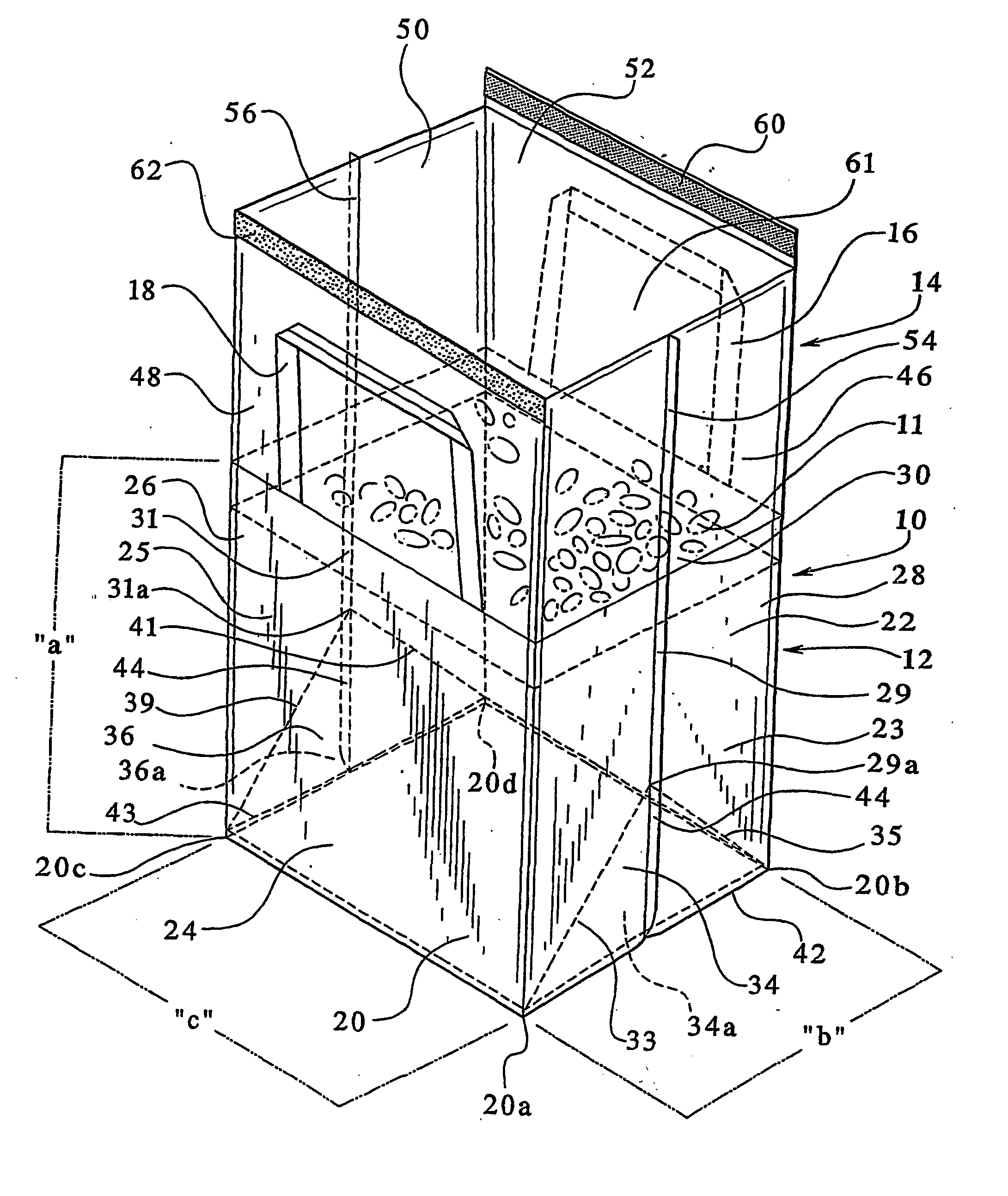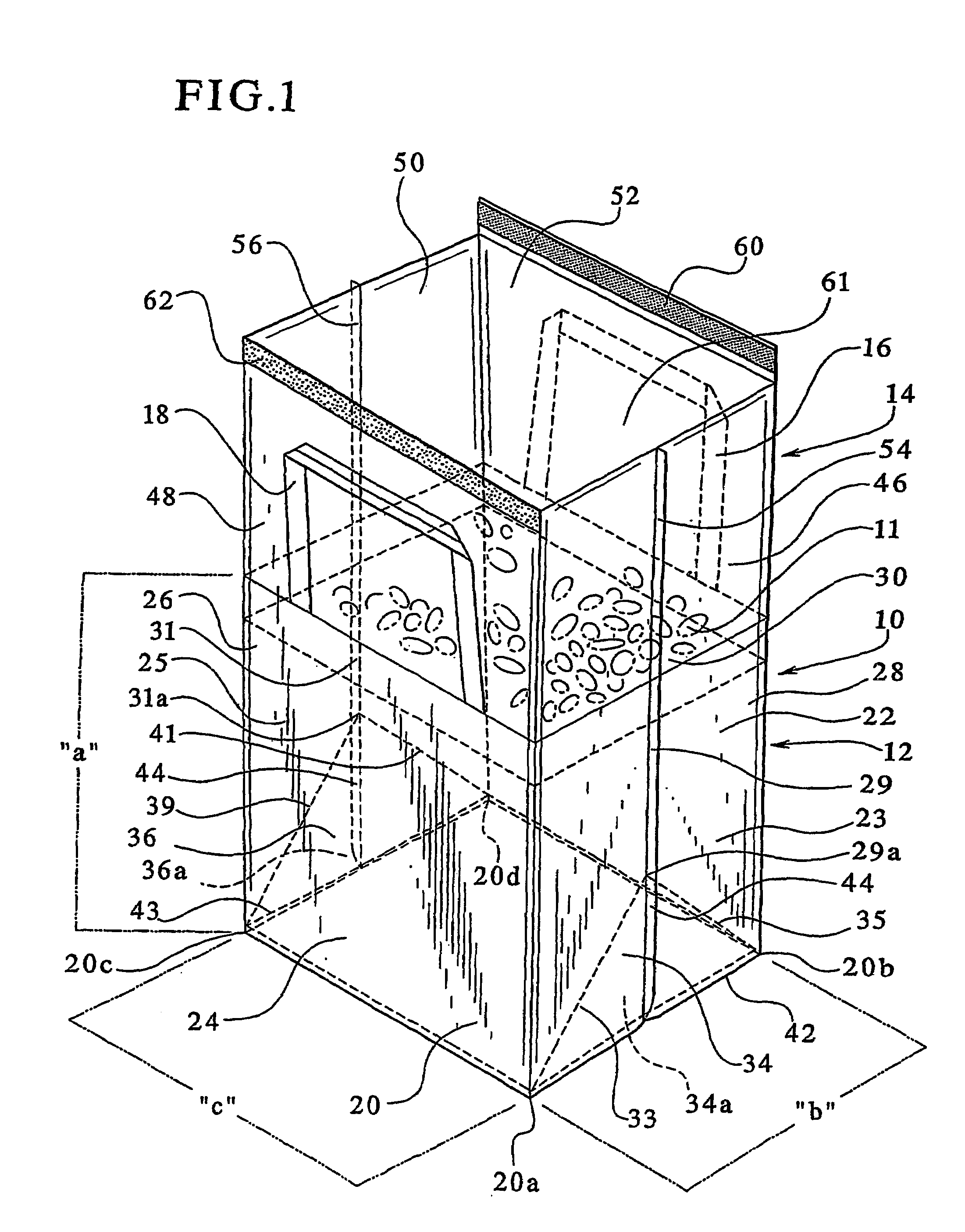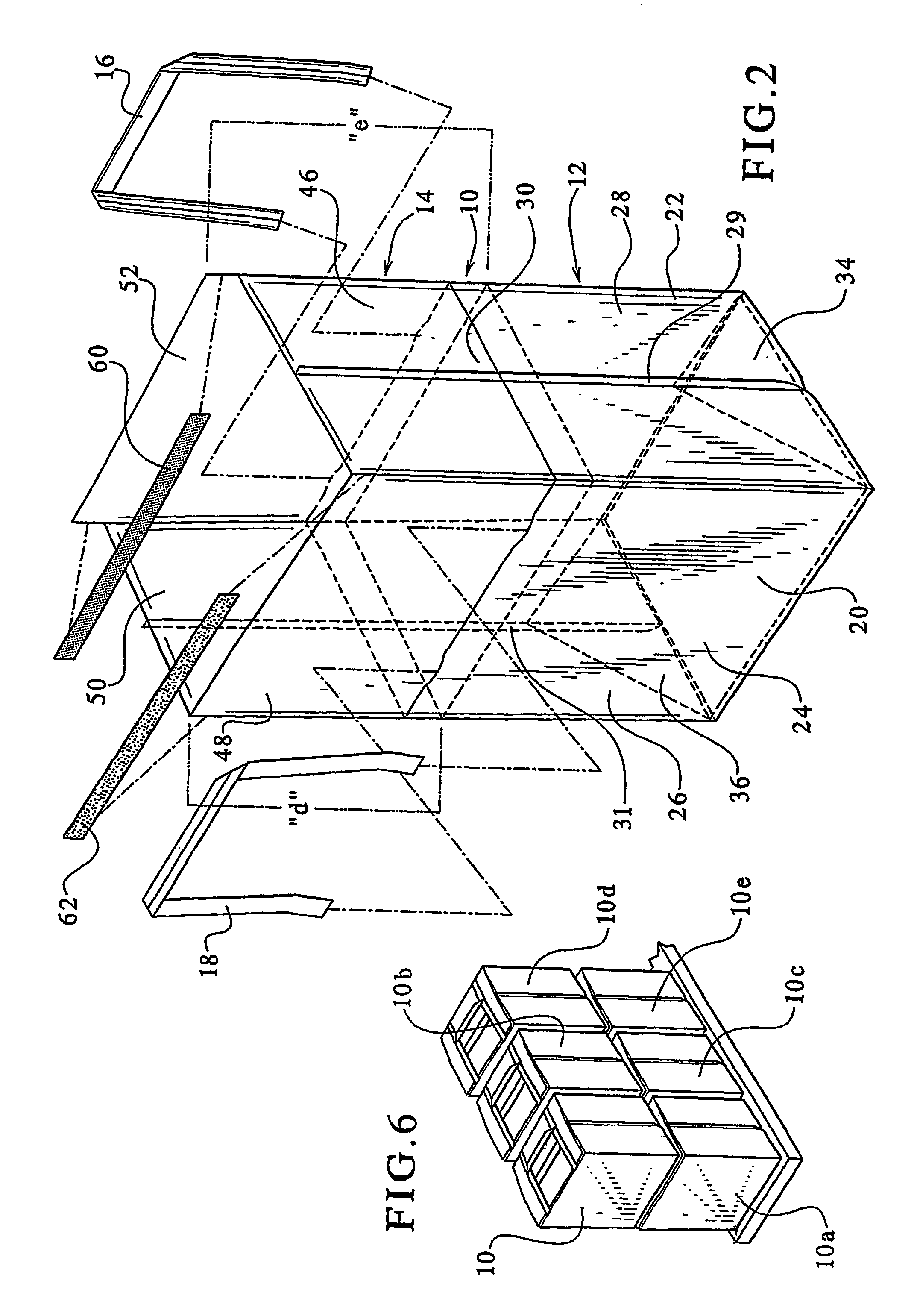Flexible container having flat walls
a flexible container and wall technology, applied in the field of containers, can solve the problems of inconvenient storage and discarding of empty containers, cumbersome shipping of rigid empty containers, inherent disadvantages of flexible containers, etc., and achieve the effect of sufficient stability
- Summary
- Abstract
- Description
- Claims
- Application Information
AI Technical Summary
Benefits of technology
Problems solved by technology
Method used
Image
Examples
Embodiment Construction
[0057]The present invention provides an improved container and method for manufacturing same for housing products. The container is constructed from a flexible material, e.g., thin film of plastic, and has sufficient rigidity and strength to house and store a variety of products. Moreover, due to its construction, the container is stackable. It may be made also from laminated sheet material.
[0058]FIG. 1 illustrates a transparent perspective view of an embodiment of a container 10 of the present invention. The container 10 is illustrated filled with product 11 and in an open condition. As illustrated in FIG. 4, in its sealed condition, the container 10 takes on, in a preferred embodiment, a cuboidal shape. The cuboid, e.g., cube-shape, of the flexible container 10 provides a container with greater stability when stored. Moreover, the cuboidal shape of the container 10 allows for vertical stacking of a number of filled containers as illustrated in FIG. 6. This allows for the display o...
PUM
| Property | Measurement | Unit |
|---|---|---|
| width | aaaaa | aaaaa |
| width | aaaaa | aaaaa |
| height | aaaaa | aaaaa |
Abstract
Description
Claims
Application Information
 Login to View More
Login to View More - R&D
- Intellectual Property
- Life Sciences
- Materials
- Tech Scout
- Unparalleled Data Quality
- Higher Quality Content
- 60% Fewer Hallucinations
Browse by: Latest US Patents, China's latest patents, Technical Efficacy Thesaurus, Application Domain, Technology Topic, Popular Technical Reports.
© 2025 PatSnap. All rights reserved.Legal|Privacy policy|Modern Slavery Act Transparency Statement|Sitemap|About US| Contact US: help@patsnap.com



